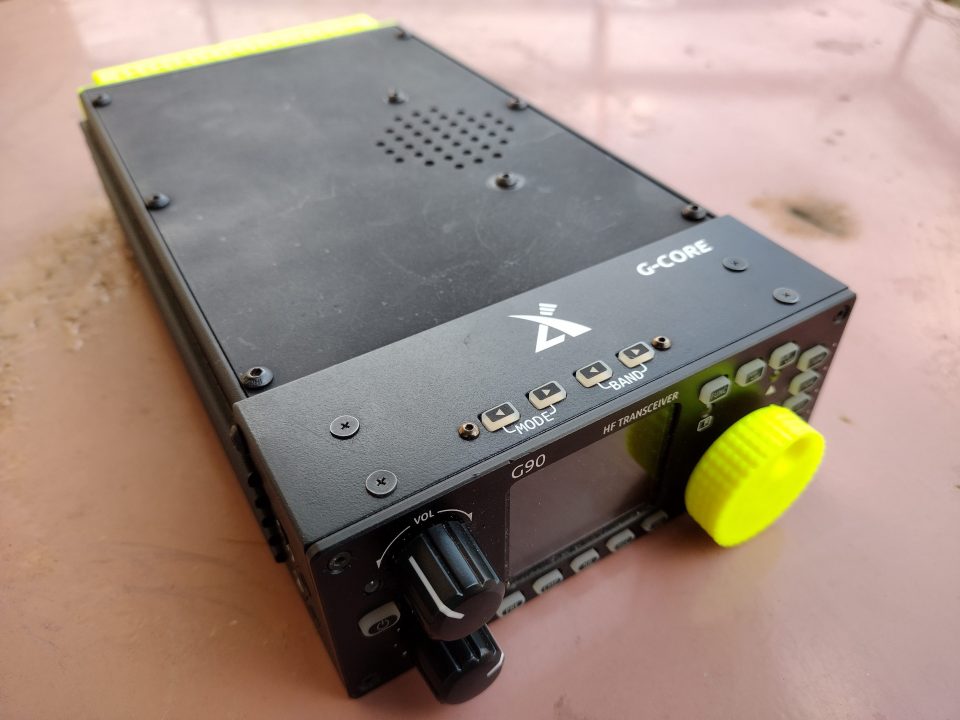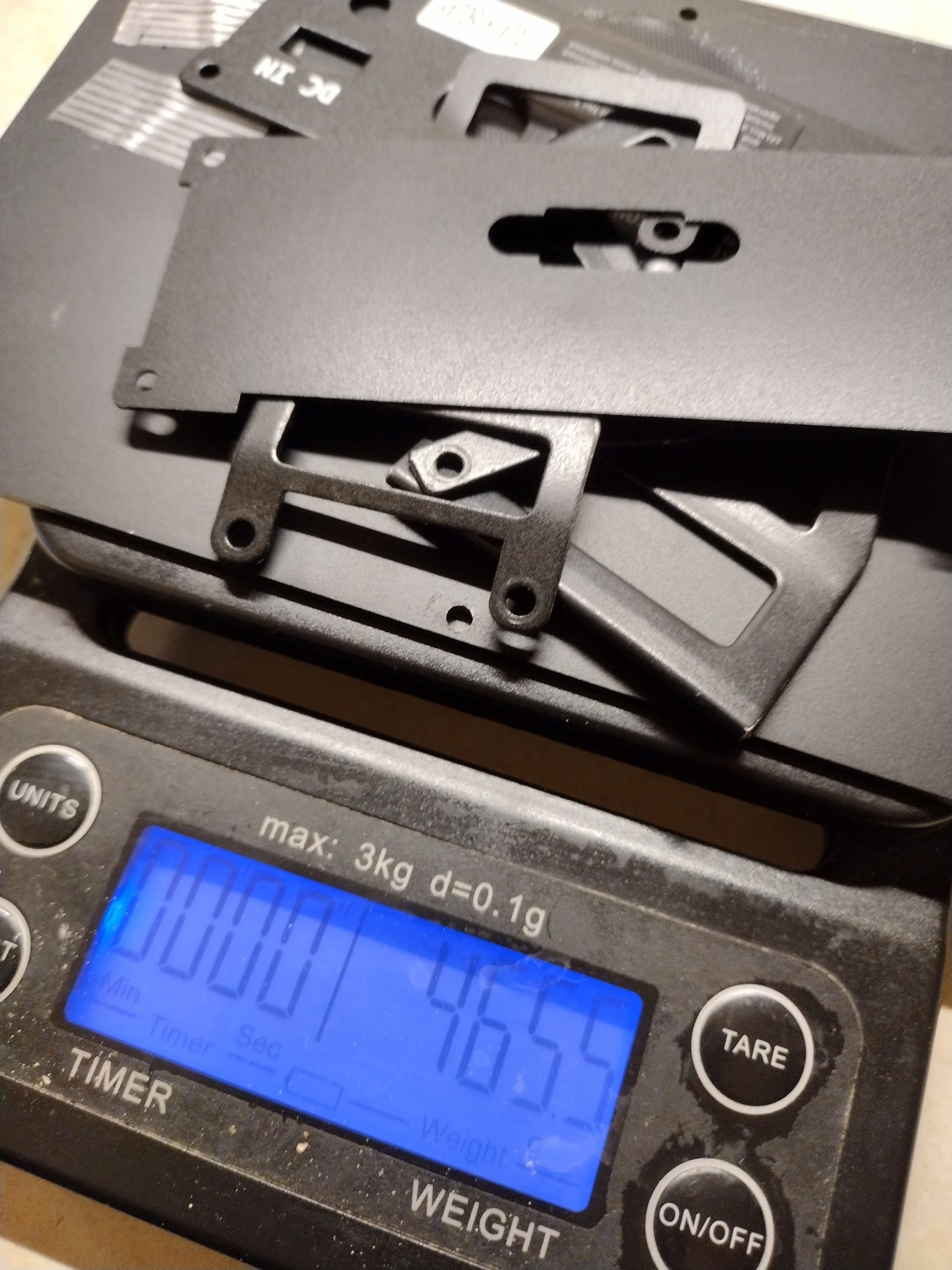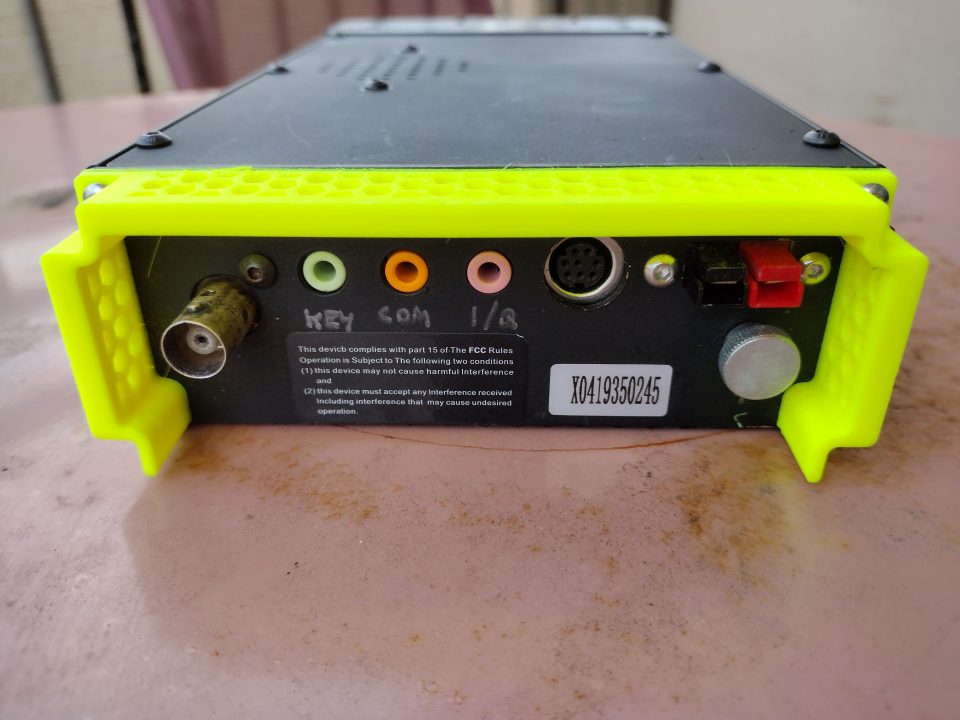I bought a used Xiegu G90 in 2023 as a portable rig to take on SOTA (Summits On The Air) activations, and to use as a travel rig. The G90 is a compact unit, about the size of an airport-best-seller novel which covers all modes from 160m to 10m at 20w output: it is SDR based with a colour waterfall display and a built in ATU.

The first change I wanted to make was a Powerpole cable since I was transitioning my shack to Powerpole distribution. When I found that the Tamiya-style power connector the G90 used cost significantly more than a Powerpole, I decided that I might as well take the opportunity to replace the connector on the back of the radio, and also replace the SO239 with a BNC so that I would not need to use an adaptor. When I removed the top and rear plates I discovered, much to my surprise, that they are made of steel!
The weight for the main unit (less the handmic) was 1659g, which is a huge selling point for those of us who want to be able to carry an HF transceiver that has more power than QRP. The main body is an extruded aluminium heat-sink with a ~2.5mm steel top and back. The detachable front “head unit” has a thin steel casing and two steel handle/guards, and if you are planning to keep the radio together as a single unit, there is a steel cover plate on the main body which can be removed (you can’t remove the back of the head unit as it is structural).

I had a piece of 6061 aluminium sheet, so I cut a replacement top and rear plate to match the exact dimensions of the originals. For the top plate I used double-sided tape to hold the new piece to the back of the original, and used the steel plate as a drill guide. The rear plate needed some modification to make it native Powerpole and BNC (Note that I put the BNC mounting plate on the inside, and doing this means that you need to be careful with the type of screw heads you use, and how they will clear the PCB and standoffs). I also added an internal fuse, using an automotive-type fuse with a couple of spade connectors, which have heat-shrink on them to avoid shorting. There is enough space within the housing (near the ATU) for the fuse to not be fixed in place. The existing wires were also long enough to use for the modification.
The total weight of the steel parts removed was 466g. The revised weight of the rig is 1304g, including the 3d printed bash-guard I made to protect the BNC connector, and with a 3d printed VFO knob. Though 300g may seem trivial, it is 20% of the original weight.


I did not purchase *real* Anderson Powerpoles, I bought Philmore 30A ones from CQ Radio Supply on eBay for this, and they work well.
STL files for the rear plate (above) a matching faceplate and the cover I have been using for shoving the radio in a backpack are all on Thingiverse HERE. The LiFePo4 battery pack I made for the radio is also on another post.
